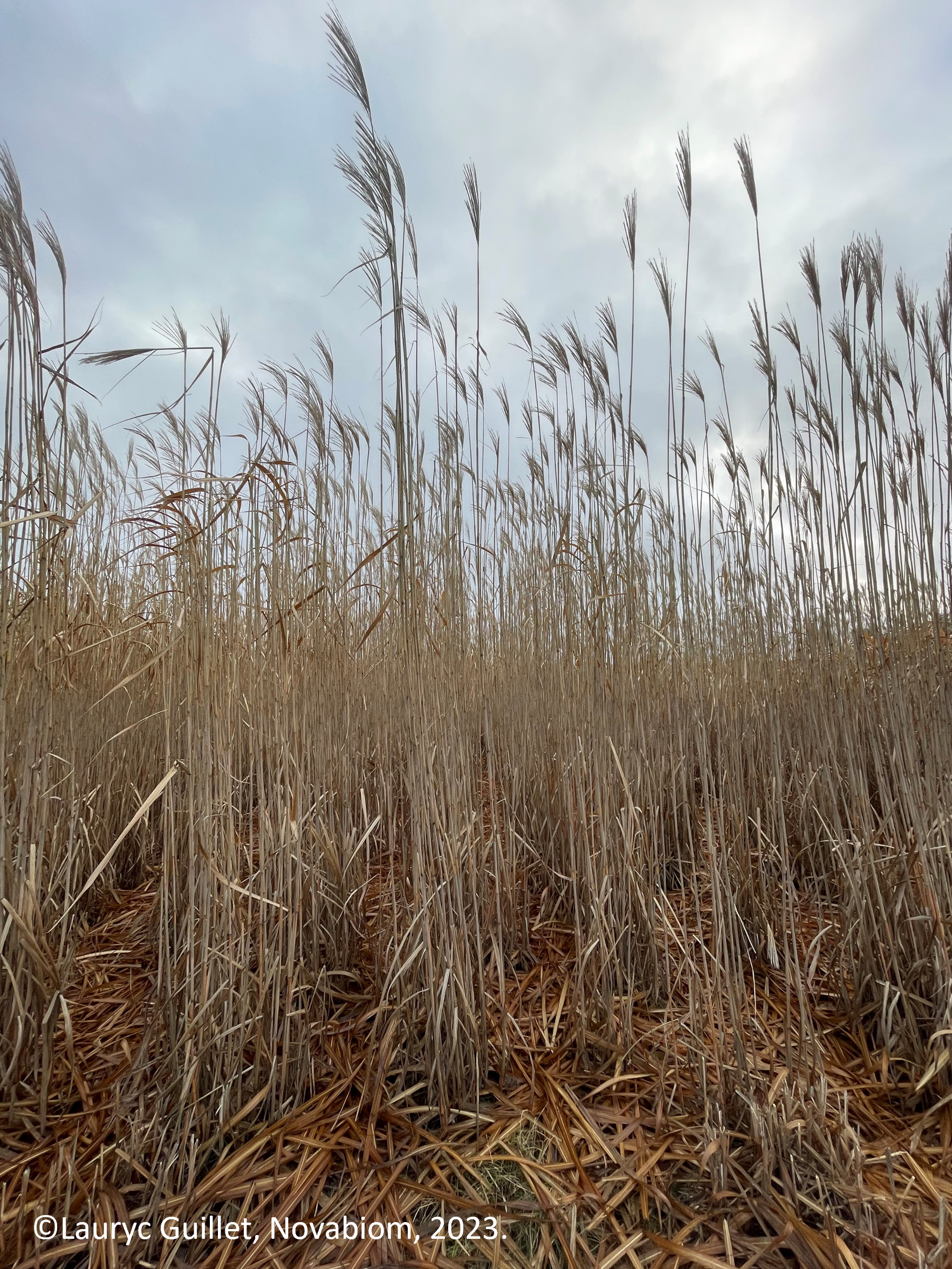
Miscanthus cultivation enables the storage of one tonne ofCO2 per hectare per year.
The research project CE-CARB (Energy crops and carbon storage) funded by Ademe and led by INRAE has shown that miscanthus stores around 1 tonne ofCO2 equivalent per hectare per year over its growing cycle.
This study, published in 2022, is unique in that it is based on plots of miscanthus x giganteus over 12 years old, making the results all the more valuable.
CO2 storage: how and how much?
Miscanthus stores carbon via two main processes: the decomposition of leaves above ground and the degradation of underground parts. In fact, the rootlets (fine roots extending from the rhizome) are renewed every year.
Compared with annual crops, a plot of miscanthus harvested in March and destroyed after 20 years stores the equivalent of 1.3 to 3.3 tonnes ofCO2 /ha/year . Taking into account greenhouse gas emissions during planting and harvesting, the average net storage is around 1 tCO2 /ha/year in France.
The preceding results are the fruit of work carried out at the INRAE Estrée-Mons experimental station in the Somme and the Arvalis Baziège station in the Haute-Garonne. The two "Biomasse & Environnement" (B&E) experimental facilities in the Somme and the GIE GAO platform (Arvalis/Terres Innovia) were set up in 2006.
What's next?
With a net average storage of around 1 tonne ofCO2/ha/year over its growing cycle, miscanthus provides significant environmental benefits for soil and climate. It also opens the door to low-carbon certification for miscanthus, a subject on which we are actively working with the France Miscanthus association.
To find out more :
FERCHAUD Fabien, BOISSY Joachim, MOUNY Jean-Christophe, DUPARQUE Annie, MARSAC Sylvain, CHENU Claire, 2022. CE-CARB project: energy crops and carbonckage de carbone dans les sols. Final report. 125 pages
